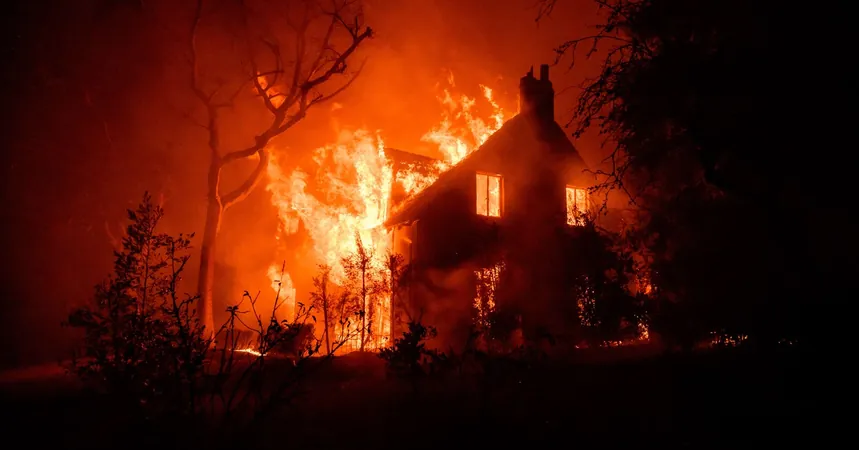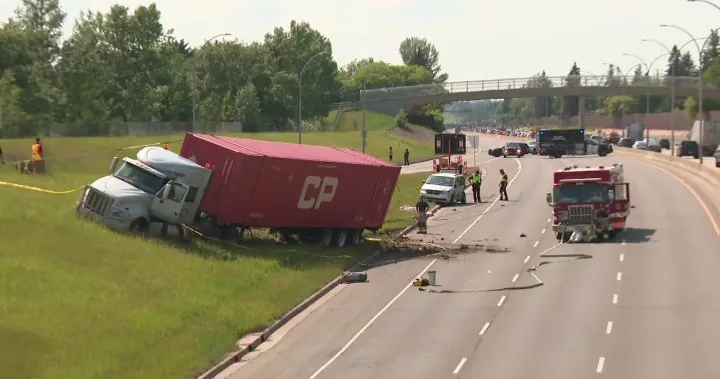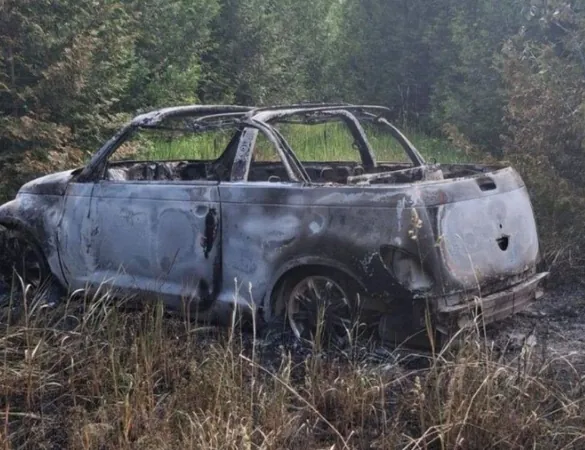
California's New Insurance Rules Face Major Challenge Amidst Devastating Los Angeles Fires
2025-01-09
Author: Benjamin
In the wake of fierce Santa Ana winds, Southern California has recently been ravaged by wildfires, particularly impacting the affluent neighborhood of Pacific Palisades in Los Angeles. As of Wednesday afternoon, the fire has consumed 1,000 structures and forced tens of thousands of residents to evacuate. Simultaneously, another large brush fire near Pasadena has resulted in the tragic loss of at least two lives. Preliminary estimates indicate that damage from the Pacific Palisades Fire alone could soar above $10 billion, a staggering figure that starkly highlights the ongoing climate crisis.
These catastrophic events are set to put California's newly introduced insurance reforms to the ultimate test. Over the past decade, the Golden State has grappled with a growing crisis in its home insurance market, primarily triggered by an alarming surge in climate-induced weather calamities. Following a series of devastating wildfires in 2017 and 2018, many insurance companies abandoned the state or drastically increased premiums, leaving customers in fire-prone regions struggling to secure adequate coverage.
In response to this pressing crisis, California's insurance commissioner, Ricardo Lara, recently unveiled a comprehensive set of reforms aimed at stabilizing the market and attracting insurance providers back into the foray. “This is a historic moment for California,” he stated, emphasizing the balance between consumer protection and the necessity for insurers to manage climate risk effectively.
Under the new rules, insurance companies are mandated to expand their operations in what California designates as “distressed areas”—regions that are particularly susceptible to wildfires. Companies must ensure that their market share in these high-risk zones constitutes at least 85% of their total market share statewide. For instance, an insurer controlling 10% of California's market will need to secure at least 8.5% in areas with heightened fire risk.
However, while this reform may pave the way for greater coverage availability, it comes with certain caveats. Insurers will now have enhanced flexibility to transfer the costs associated with heightened fire risks to consumers. For years, California's regulations prevented insurance companies from utilizing forward-looking “catastrophe models” to set their rates or factoring in the rising costs of reinsurance, inadvertently subsidizing homeowners in vulnerable areas.
This significant shift raises concerns among residents in fire-prone locales. Many fear that despite the increased availability of insurance options, the accompanying rise in premiums could make it financially unfeasible to maintain adequate coverage. Jason Lloyd, a resident of Lake County, expressed that while he hopes for improved experiences with insurers, there is a palpable anxiety about the imminent hikes in insurance costs.
Other Western states, including Colorado and Oregon, are beginning to encounter similar struggles with insurance coverage gaps, although they have yet to face crises as severe as California’s. In light of California's proactive approach to partner with the insurance industry, other states may look to replicate this model as they seek solutions to address their own coverage lapses.
As California grapples with its latest wildfire outbreaks, insurance experts caution that the repercussions could be far-reaching. Joel Laucher from the consumer advocacy group United Policyholders has voiced concerns that "major losses" from the recent blazes could lead to additional price increases and restrict options for consumers. Frazier, representing the insurance trade group, echoed these worries, noting that if similar catastrophic years occurred, it could once again deter insurers from conducting business within the state.
With the stakes at an all-time high, eyes will be on California to see how these newly imposed regulations unfold amidst the ongoing threat of climate change and the increasing frequency of devastating wildfires.









 Brasil (PT)
Brasil (PT)
 Canada (EN)
Canada (EN)
 Chile (ES)
Chile (ES)
 Česko (CS)
Česko (CS)
 대한민국 (KO)
대한민국 (KO)
 España (ES)
España (ES)
 France (FR)
France (FR)
 Hong Kong (EN)
Hong Kong (EN)
 Italia (IT)
Italia (IT)
 日本 (JA)
日本 (JA)
 Magyarország (HU)
Magyarország (HU)
 Norge (NO)
Norge (NO)
 Polska (PL)
Polska (PL)
 Schweiz (DE)
Schweiz (DE)
 Singapore (EN)
Singapore (EN)
 Sverige (SV)
Sverige (SV)
 Suomi (FI)
Suomi (FI)
 Türkiye (TR)
Türkiye (TR)
 الإمارات العربية المتحدة (AR)
الإمارات العربية المتحدة (AR)